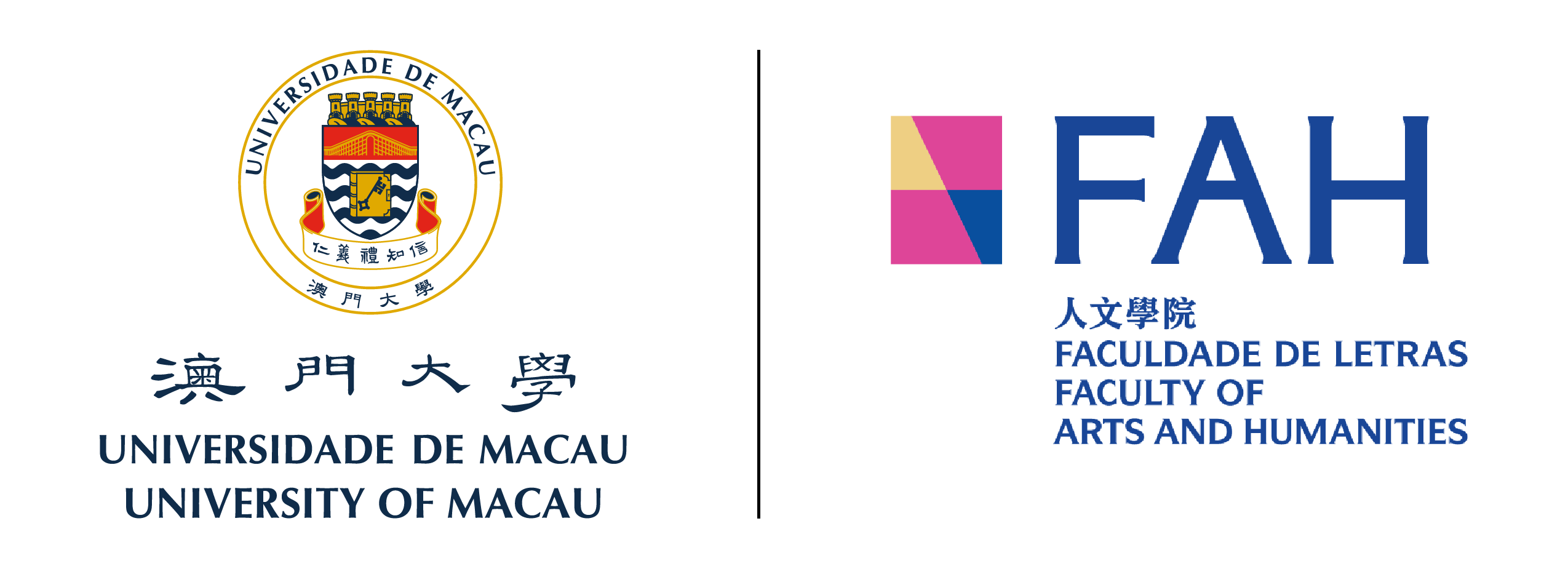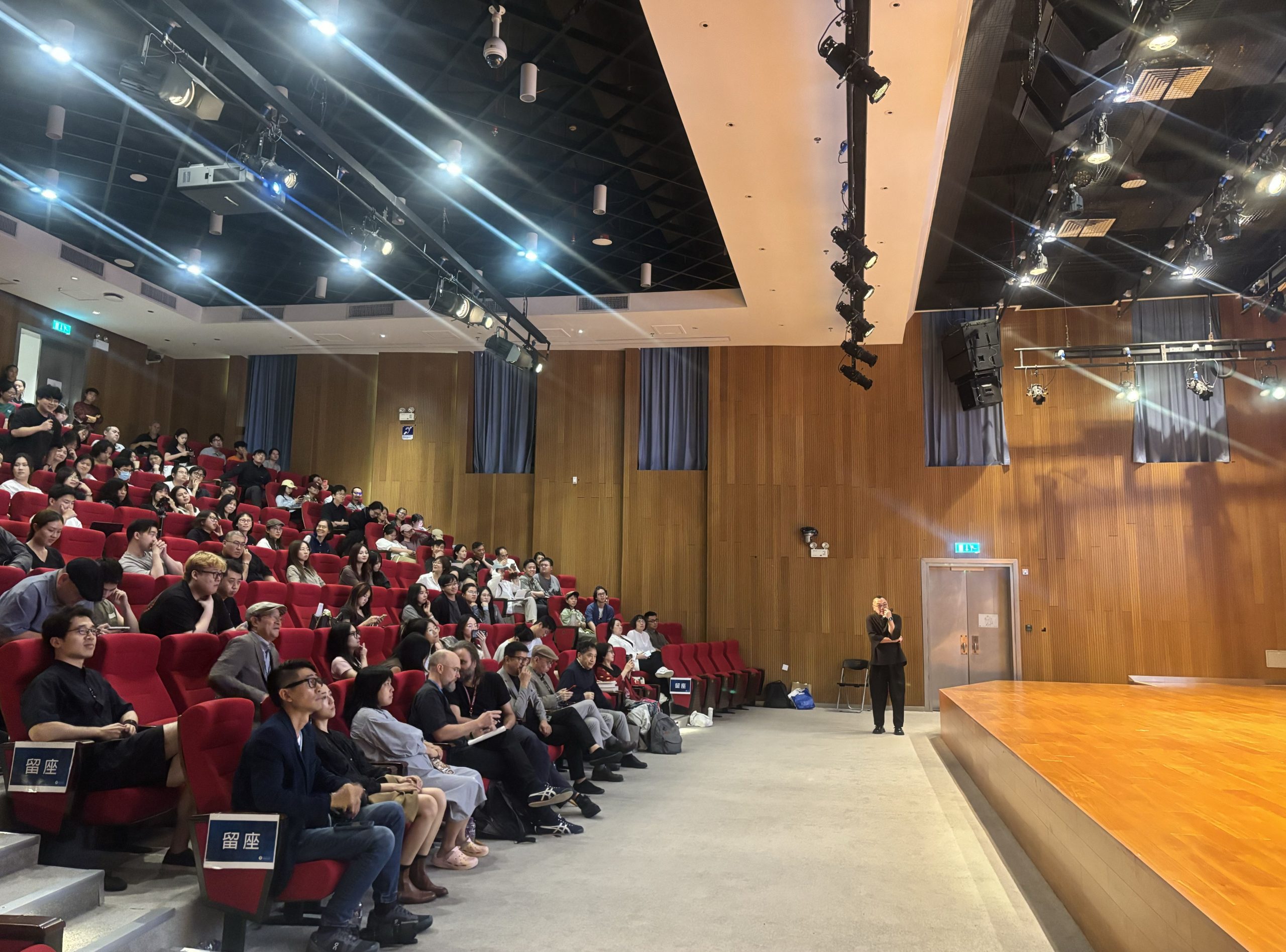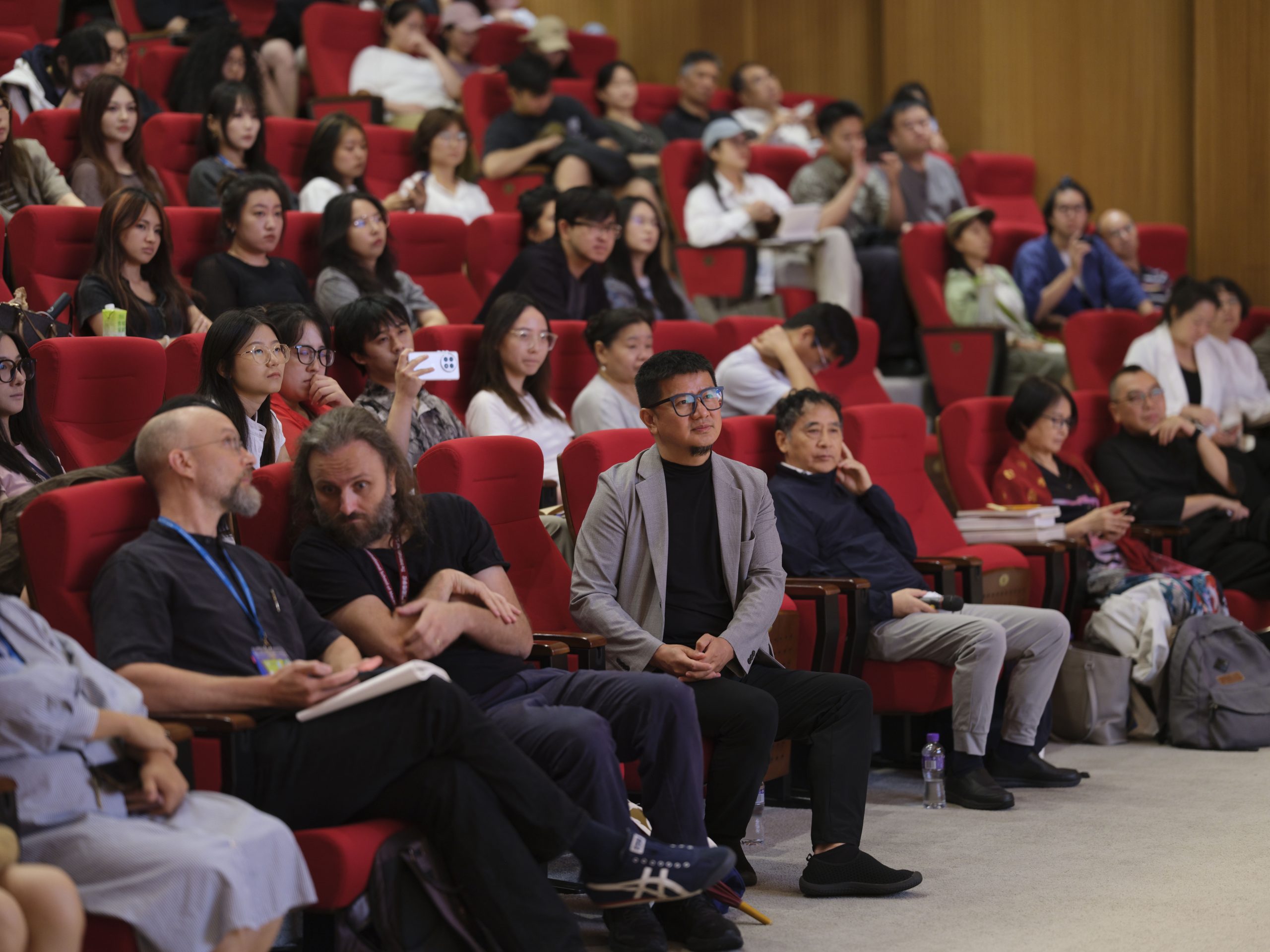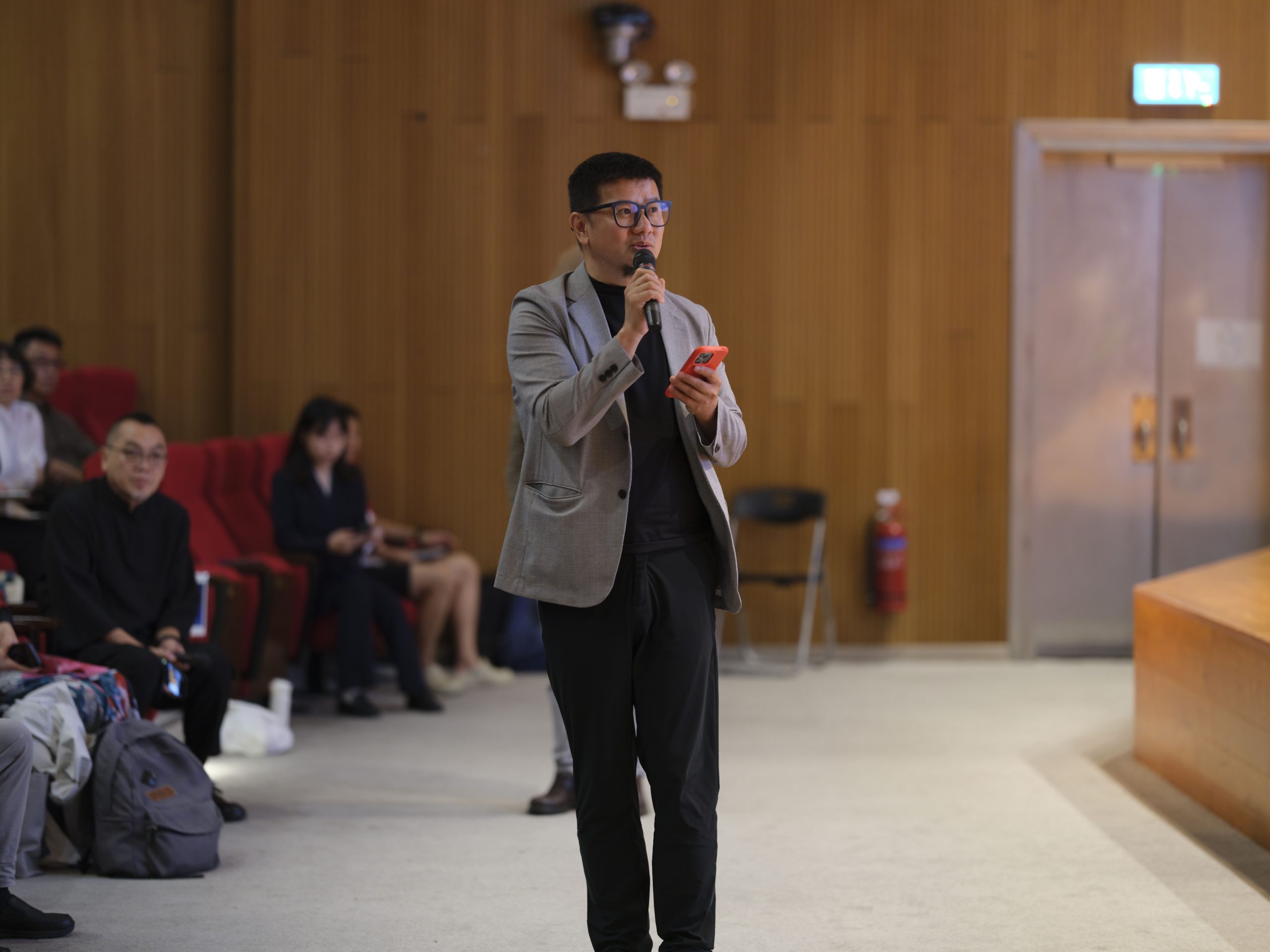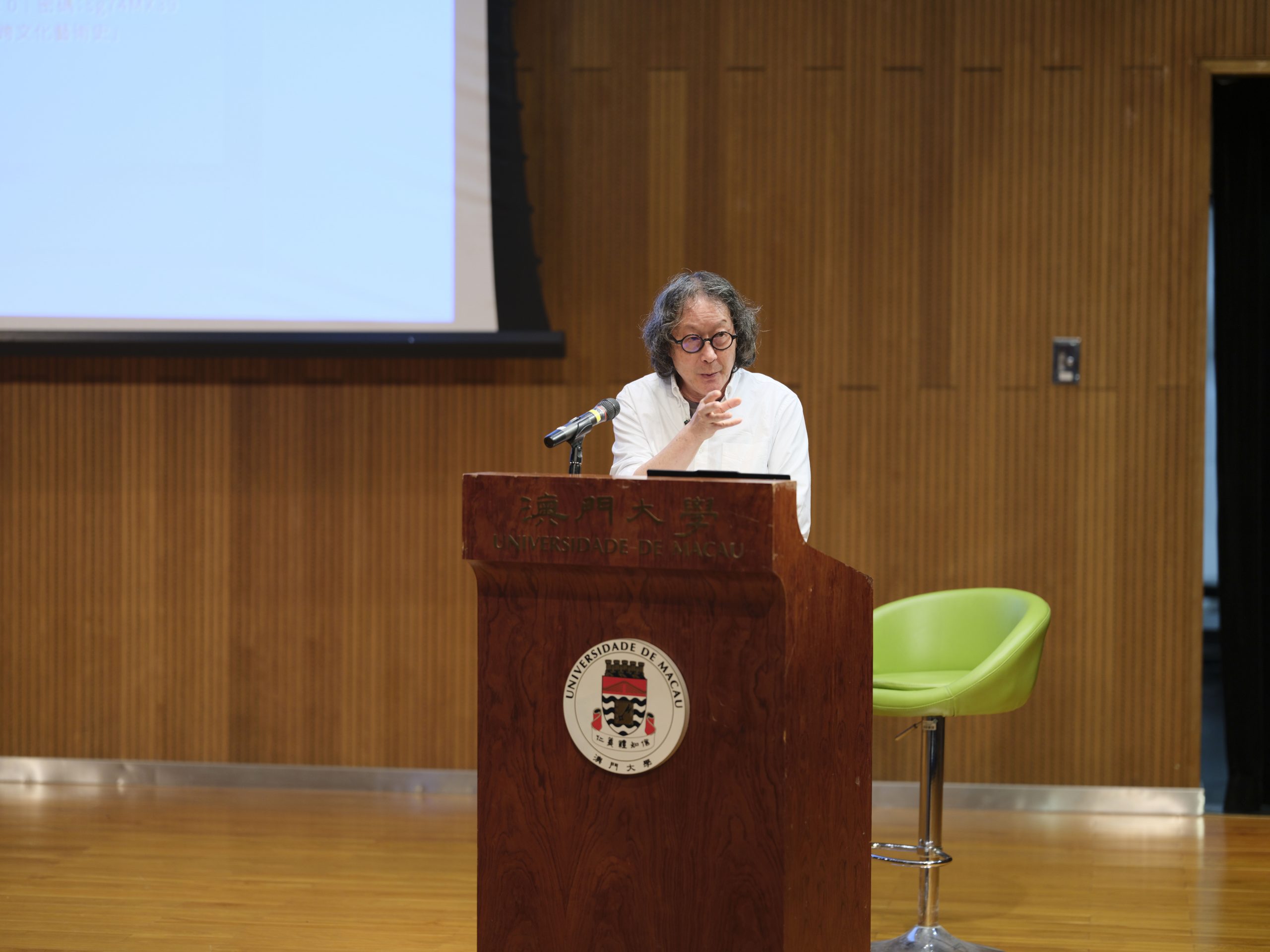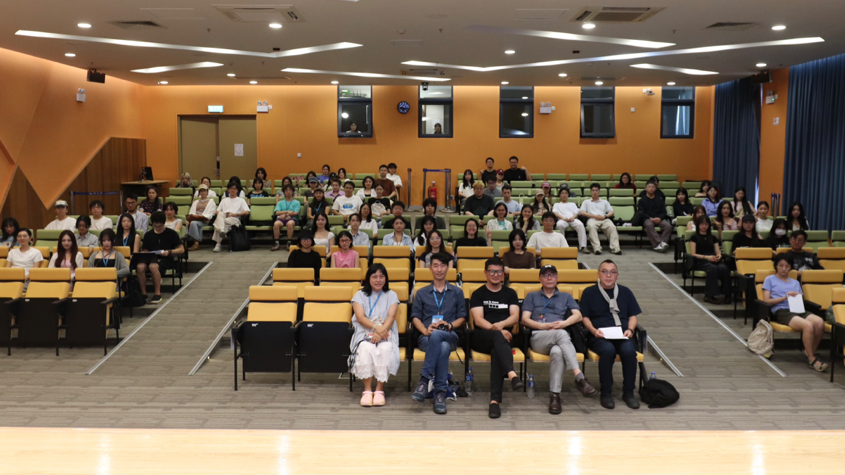On September 8, 2025, the lecture titled “Doing Art, Do What?” by renowned artist Professor Xu Bing from the Central Academy of Fine Arts was successfully held at the University of Macau. This lecture was jointly organized by the Institute of Advanced Studies in Humanities and Social Sciences and the Department of Arts and Design of Faculty of Arts and Humanities at University of Macau. Lasting two hours, the event was conducted both offline and via live stream, with a total of over 4,500 attendees.
At the beginning of the lecture, Professor Xingzhong Yu, Dean of the Institute of Advanced Studies in Humanities and Social Sciences and Distinguished Professor of Faculty of Law, and Professor Jun Li, Head of the Department of Arts and Design and Distinguished Professor, delivered opening speeches. Professor Yu first expressed gratitude to Professor Xu Bing and introduced the connection between Professor Xu and the Institute of Advanced Studies at the University of Macau, highlighting the special significance of this lecture. Subsequently, Professor Li noted that despite the coincidental typhoon during Professor Xu’s two lectures in Macau, the events proceeded as scheduled, calling it an “appointment with the typhoon”—after the physical typhoon passed, we welcomed a “mental typhoon” akin to a storm of ideas. Professor Li also mentioned that the curriculum of the Department of Arts and Design at University of Macau includes content related to Professor Xu Bing, encouraging students and practitioners at the University of Macau: everyone can participate in the field of contemporary international art, and Professor Xu Bing is our role model.
During the lecture, Professor Xu Bing drew from his personal experiences to introduce the theme, exploring “Where Does Art Begin?”: the essence of contemporary art lies in its ambiguous definition and constant mutation. He argued that contemporary art is continuously shaped by technology and social contexts, making it a “non-field”—a field defined by its capacity for self-reflection and self-negation. We seem never able to touch its core, so related education and discussions often revolve around its periphery. Art cannot be separated from “technique” (术) nor from “artistry” (艺). Technique is visible, while the artistic dimension remains difficult for artificial intelligence to replace. The more AI develops, the more important art becomes—the core of art’s origin lies in the complex perceptual system unique to us as “carbon-based life.”
Professor Xu Bing proposed that contemporary art is like a “novel coronavirus” suddenly introduced into the cultural system: it disrupts the existing order but may also activate new cognitive possibilities and creative opportunities. He emphasized that the core value of artists lies in creating personalized “artistic closed loops.” Drawing from his own creative practice, he used works such as Book from the Sky, Background Story, and Dragonfly Eyes to illustrate how to find inspiration in the tension between technology and art and how to address social issues from unique perspectives. He also advocated for a shift toward “Greater Fine Arts” education to cultivate innovative talents capable of translating ideas into artistic language and adapting to future society.
During the live Q&A session at the end of the lecture, students from various disciplines at the University of Macau shared their impressions of Professor Xu’s works and raised questions about artistic creation and the contemporary art ecosystem. Professor Xu Bing engaged in discussions with the audience.
Additionally, on the afternoon of September 7, 2025, Professor Xu Bing’s Dragonfly Eyes was screened at University of Macau Library Auditorium for all students and faculty. This screening served as a prelude to the following day’s lecture. Dragonfly Eyes profoundly challenged the audience’s conventional perceptions of truth, privacy, and technological ethics, establishing a common foundation for reflection. Many attendees left with questions and thoughts, which were further addressed during the artist’s personal interpretation at the next day’s lecture. The format of “screening + lecture” created a dialogue between visual language and academic discussion, forming a closed loop from perceptual experience to rational inquiry.
As one of the key annual academic events jointly organized by the Institute of Advanced Studies in Humanities and Social Sciences and the Department of Arts and Design at University of Macau, this lecture reflected the concept of treating contemporary art as a dynamic and open system while actively fostering a cross-cultural and interdisciplinary space for artistic dialogue. It not only enhanced understanding of cutting-edge issues in contemporary art but also highlighted the broad application value of art in the humanities and social sciences. The success of this event has expanded perspectives and possibilities for research in art theory and practice, further strengthening the organic connection between academia and creative expression.

